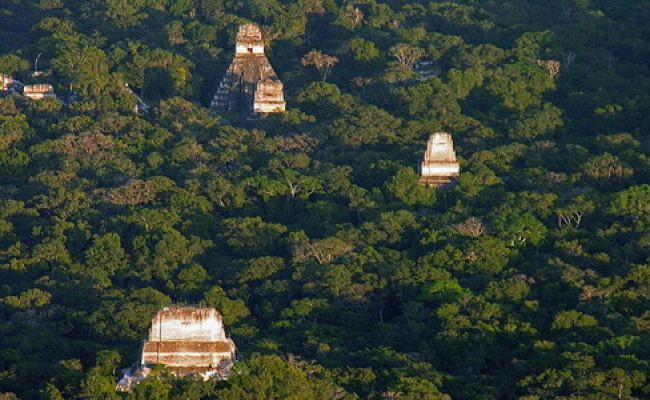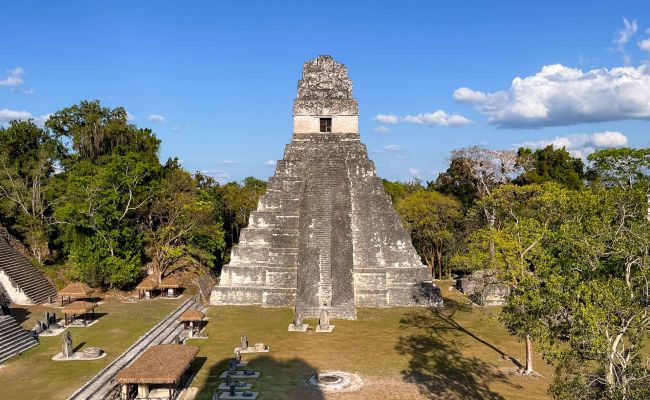Discovered in a Guatemalan jungle, Tikal is the ruin of an ancient city, likely known as Yax Mutal. It is one of the pre-Columbian Maya civilization’s major archaeological sites and cities. It is located in the Petén Basin archaeological zone in what is now northern Guatemala. Tikal National Park, a 1979 UNESCO World Heritage complex, is located in Guatemala’s El Petén district.
Tikal served as the capital of a conquest state that grew into one of the ancient Maya’s most powerful kingdoms. Tikal’s monumental architecture dates back to the 4th century BC, but it reached its pinnacle during the Classic Period, which lasted from approximately 200 to 900. During this period, the city dominated the majority of the Maya region politically, economically, and militarily, while also engaging with other parts of Mesoamerica, including the enormous metropolis of Teotihuacan in the distant Valley of Mexico. Evidence suggests that Teotihuacan captured Tikal in the fourth century AD. After the Late Classic Period ended, Tikal did not see the creation of any new significant monuments, and there is evidence of the razing of elite palaces. A slow population decline accompanied these events, leading to the site’s abandonment by the end of the tenth century.
Tikal is the most well-known of the big lowland Maya towns, thanks to its extensive dynastic ruler list, the discovery of many of the rulers’ tombs, and the research of its monuments, temples, and palaces.

History
Tikal, nestled in the deep rainforests of northern Guatemala, is one of the most important archeological monuments from the ancient Maya civilization. Its history dates back to the Preclassic Period (1000 BC–200 AD), when it began as a modest farming community before expanding into a prominent center. Tikal reached its pinnacle during the Classic Period (200–900 AD), emerging as a strong political, economic, and cultural center. A succession of powerful monarchs ruled Tikal, known for its massive architecture featuring towering pyramids and grand plazas, expanding their authority through alliances and military victories.
The city’s population grew dramatically, and it became a hub of Maya cultural and intellectual activity. However, throughout the Terminal Classic period (900–1100 AD), Tikal declined owing to political instability, environmental stress, and economic shifts, ultimately leading to its abandonment. Intense archaeological research rediscovered Tikal in 1848. In 1979, UNESCO named it a World Heritage Site, earning it reverence for its historical significance and contributions to our understanding of the ancient Maya.
Etymology
The Yucatec Maya word ti ak’al, which means “at the waterhole,” may have inspired Tikal’s name. Local hunters and travelers appear to have named one of the site’s historic reservoirs. The Itza Maya language has also interpreted it as “the place of the voices.” However, the site adopted Tikal shortly after its discovery in the 1840s instead of its historic name.
Hieroglyphic inscriptions in the ruins refer to the ancient city as Yax Mutal or Yax Mutul, which means “First Mutal.” Tikal may have acquired this name when Dos Pilas began to use the same symbol glyph; the city’s rulers likely wished to differentiate themselves as the first to hold the moniker. Mutul, the reading of the “hair bundle” symbol glyph in the accompanying image, served as the common name for the entire kingdom. Its specific significance is unclear.
Population
Estimates place Tikal’s population between 10,000 and 90,000. Tikal’s population began to expand steadily in the Preclassic Period (about 2000 BC–AD 200), reaching a peak in the Late Classic, when the population grew significantly from AD 700 to 830, followed by a precipitous drop.
